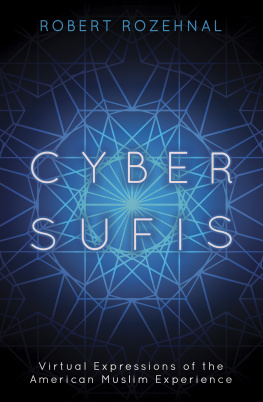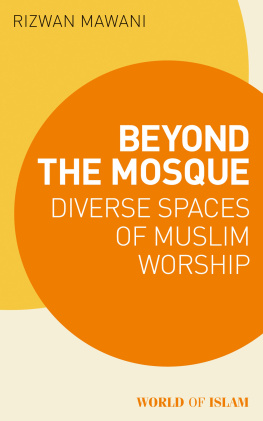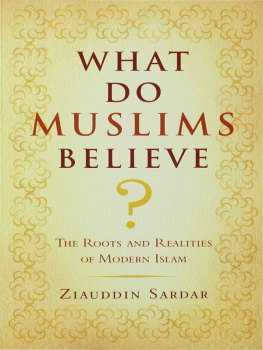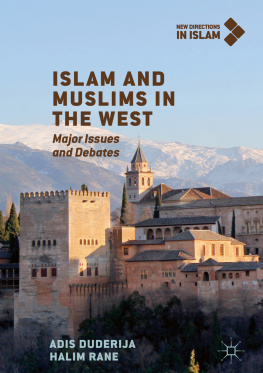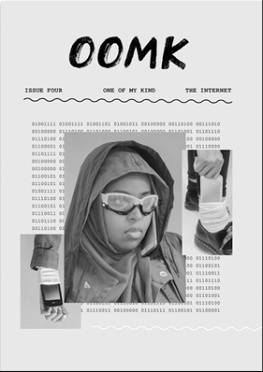CYBER SUFIS
Islam in the Twenty-First Century
Series Editor: Omid Safi
ALSO IN THIS SERIES :
Inside the Gender Jihad , Amina Wadud
Progressive Muslims , Ed. Omid Safi
Misquoting Muhammad , Jonathan A. C. Brown
About the Author
Robert Rozehnal is Associate Professor of Religion Studies and Founding Director of the Center for Global Islamic Studies at Lehigh University. He is the author of Islamic Sufism Unbound , the editor of Piety, Politics and Everyday Ethics in Southeast Asian Islam: Beautiful Behavior , and numerous articles. He previously served as the national co-chair of the Islamic Mysticism program unit at the American Academy of Religion.
CYBER
SUFIS
Virtual Expressisons
of the American
Muslim Experience
ROBERT ROZEHNAL

Contents
The inspiration for this book emerged from my previous monograph, an ethnography of a contemporary Sufi community in Pakistan ( Islamic Sufism Unbound: Politics and Piety in Twenty-First Century Pakistan ). During my time living and traveling with members of the Chishti Sabiri Order, I documented their initial experiments with digital media as a tool for internal communication, spiritual pedagogy, and public outreach. For the past decade, my thinking has been further shaped by courses I teach at Lehigh University that in various ways explore digital religion, Internet Islam, and Cyber Sufism. It goes without saying that todays Generation Z students swim in digital media as naturally as fish in water. To meet them where they are, I quickly discovered the utility of Internet resources as supplementary teaching texts. This immediately led to other, more humbling realizations: that while I am no Luddite, my tech talents lag far behind my undergraduate students; that while most students are enthusiastic technophiles, they often lack the critical skills required to read and interpret digital sites and spaces; and that what I really needed in the classroom was an introductory road map to guide us all through the virtual jungle. That book did not exist, however. This study is an attempt to help fill that lacuna.
The research for this project was funded by generous institutional support from the Department of Religion Studies at Lehigh University, a summer grant from Lehighs Humanities Center, and a two-year New Directions Fellowship from Lehighs College of Arts and Sciences. I wish to thank Ryan Stillwagon who helped launch this project as a student assistant in the early stages. I owe a special debt of gratitude to my department colleagues and, in particular, Anna Bigelow of North Carolina State University for their friendship, collegiality, and careful readings (and insightful critiques) of the books multiple drafts.
As an Islamicist with specialized training in South Asia, this book represents a new trajectory for my own scholarship. My analysis draws liberally on a diverse range of resources in order to situate Sufi digital media within the extant scholarship on digital religion and Islam in America. I am deeply indebted to every scholar whose name appears in the endnotes and bibliography. In the interest of accessibility for non-specialist readers, I have minimized the use of diacritics for all transliterated terms (Arabic, Persian, Turkish) throughout the book.
Over the past several years, I presented versions of this work in a variety of academic settings. These included public lectures at Rutgers University, Franklin and Marshall College, Lafayette College, Bard College, Duke University, Emory University, and the Ecole des Hautes Etudes en Sciences Sociales (EHESS) and Institut detudes de lIslam et des Societies du Monde Musulman (IISM) in Paris. I also presented various iterations of this research at several international conferences, including the 2012 International Conference on Digital Religion at the University of Colorados Center for Media, Religion and Culture; the 2014 Conference of the International Society for Media, Religion and Culture, University of Kent, Canterbury, UK; the 2015 Eighth Global Studies Conference, Power and Participation in the Age of Globalized Information Webs and Big Data, at Imperial College London; and a 2017 conference in honor of Professor Carl Ernst at the University of North Carolina, Chapel Hill. I am immensely grateful for the provocative questions and constructive criticism I received from colleagues, students, and audience members in each of these forums. In the end, however, I am solely responsible for the analysis and interpretationsas well as any omissions and mistakesexpressed in this book.
Finally, I offer heartfelt thanks to Novin Doostdar and Omid Safi (Series Editor) of Oneworld Publications for their wisdom, encouragement, and boundless patienceand to Jonathan Bentley-Smith, Laura McFarlane, and the entire Oneworld editorial team for their assistance, advice, and expertise.
In the twenty-first century, global religions survive and even thrive within the digital ecosystem of the World Wide Web. As a study of digital religion in practice, this book explores cyberspace as an alternative media platform for tech-savvy Muslims who seek to root (or reboot) their faith within the complex religious topography of the United States of America. The focus of my inquiry is the Sufi tradition. SufismIslamic mysticismis a spiritual path deeply embedded in the long and storied history of Islamic civilization. At its heart is the intense and intimate relationship between a disciple ( murid ) and a teacher ( shaykh ). In Sufi pedagogy, inner, intuitive, experiential knowledge ( marifa ) is cultivated through routinized and rigorous ritual practices. Both past and present, a panoply of Sufi institutional orders ( tariqa , plural turuq ) are found in diverse Muslim communities across the planet. Wherever and whenever they traveled, Sufis adapted to new social milieus by adopting local languages and embracing vernacular cultural traditions. Time and again, Sufis also proved adept at utilizing media technologies to amplify their message, to reach new audiences, to answer their critics, and to facilitate social interactions. In this sense, the ongoing transplantation of Sufism onto American soil and across the virtual continuum of the Internet represents a new chapter in an old, ever-evolving story.
From Morocco to Malaysia, from Bethlehem (Palestine) to Bethlehem (Pennsylvania), Sufis have gone global and viral in the new millennium. Today, Sufi teachings, poetry, music, and ritual performances are available to a worldwide audience via an astounding array of digital media. With a click of a button, cybernauts can access translations of the ecstatic Persian love poetry of the renowned thirteenth-century Sufi luminary, Jalal ad-Din Rumi; experience the raw emotion and vocal mastery of the female Pakistani Sufi singer, Abida Parveen; view streaming YouTube clips of members of a Tijaniyya tariqa in Senegal immersed in a late-night session of meditative chanting ( dhikr ); and download the latest video of the American Muslim convert, poet, and hip-hop artist, Baraka Blue, performing his Sufi-inspired song, Love and Light, against the backdrop of the medieval city of Fez, Morocco. A more nuanced understanding of Sufi piety in practice, however, requires more than casual web surfing. This study offers a multidimensional exploration of Cyber Sufism, spotlighting a prominent transnational Sufi community based in the United States: the Inayati Order. As the stories in this book demonstrate, todays Cyber Sufis deploy online multimedia to expand networks, rethink tradition, and refashion identity amid the raucous spiritual marketplace of contemporary American religious life.

